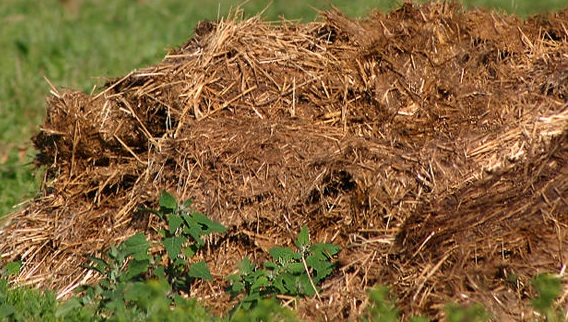
 WEB EXCLUSIVE
WEB EXCLUSIVE
Manure. Every livestock operation deals with it and
depending upon the nature of the operation, manure can either be an
asset or a liability.
July 7, 2009 – Manure. Every livestock operation deals with it and depending upon the nature of the operation, manure can either be an asset or a liability.
 |
|
The 2008 Farm Bill directed the U.S. Department of Agriculture to evaluate the role of manure as a fertilizer resource, its environmental impact, and its potential as a feedstock for bioenergy. If your operation is producing manure, will it have more value as a fertilizer or energy feedstock?
The environmental and controversial impacts of manure are well known to all livestock operation managers as well as neighbors, both urban and rural. Application limits to cropland, water pollution, odors, and similar issues increase the liability factor exponentially. However, USDA economists say there is an increasing interest in capturing the methane from manure and converting it to electricity. But when that is done, is manure being lost as an inexpensive form of fertilizer? The USDA study found that manure is applied to less than 16 million acres of cropland, about five percent, and corn receives about half of the manure applications, primarily from dairy and hog operations.
Recent high prices for commercial fertilizers make manure more cost effective, except for transportation costs. For large operations, Nutrient Management Plans require time and resources to develop and implement. Once the manure is applied, the primary issue is the nutrient value, which can vary and will likely not be in the correct ratio for crop requirements. Handling and stockpiling are always health and environmental concerns.
The USDA economists determined that livestock production costs would rise 2.5 to 3.5 percent if manure was not applied nearby and was hauled any distance. However, as livestock operations enlarge and costs are controlled, the economists doubt that consumers would ever feel the impact of any change in whether manure was diverted from cropland nutrients to energy feedstocks.
Among the potential energy benefits and potential uses of manure are:
1) Dry manure has been a fuel for heat and cooking for millennia.
2) Methane can be captured from biogas and burned for electricity generation, either on farm or fed into the electric grid.
3) Manure can be shipped to a central conversion facility.
4) Methane can be upgraded to natural gas for insertion into a pipeline.
Currently, there are only a handful of energy plants operating at livestock facilities. Less than three percent of dairies have them and less than one percent of hog confinement facilities have them. One Minnesota-based commercial plant uses 6.6 percent of turkey litter in the U.S. But on-farm facilities may allow livestock farmers to produce their own electricity and reduce their overall energy costs, with the help of state grants to reduce capital construction costs.
A lactating dairy cow will produce about 150 pounds of manure daily, and if applied to cropland at a rate of 125 pounds of nitrogen per acre, 2.64 acres would be required per cow. But with many dairies expanding in western states without cropland, manure has to be hauled at great expense. Hogs will each produce 1,200 pounds of manure in a finishing operation, and although hog production is widespread in the western cornbelt, it is also widespread in many states where cropland is insufficient to dispose of the manure as a fertilizer. A broiler will produce 11 pounds of manure, and few poultry operations also have cropland, but the relatively dry manure can be transported at minimal expense. Two-thirds of cattle are fed at operations without cropland, so the 4.9 tons of manure produced per head have to be transported to cropland.
While nearly 16 million acres of cropland depends on manure for a partial nutrient supply at least, the normal process may be interrupted, or the nutrient components changed, if the manure is initially processed by a methane digester. Bacteria in the digester breakdown the manure and emit methane, which is siphoned off for use. The USDA economists say farmers may qualify for carbon credits if they capture methane and prevent its flow into the atmosphere, and those credits would be valued about $5 per ton of manure. But once the methane is produced and used to heat mini power plants, what about the rest of the nutrients? They are still there, and available to supply N, P, and K for crop production. The digestion process reduces pathogens, neutralizes weed seeds, and greatly reduces odors, which may increase the value of the manure.
Livestock operations, particularly dairies and hog operations with substantial volumes of slurry manure may be able to benefit by processing the manure in a methane digester. The methane can be used to fuel on-farm electricity generators or upgraded into natural gas for sale. Farmers would be able to obtain carbon credits at a $5 per ton rate. The processed manure can still be utilized for cropland, with little loss in nutrient value, but since the odor has been removed, the manure may take on a greater value.